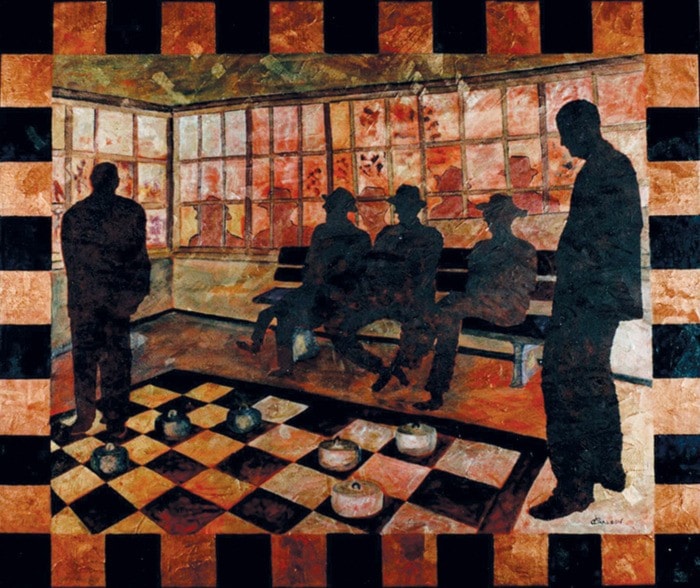For local artist Anne Louise Carlson, the loss of the old Checkers Pavilion at Beacon Hill Park is a bittersweet moment in her life. It's a moment she's immortalized with her art.
The pavilion, now slated for demolition sometime this fall, was constructed in 1936 and featured large, painted checkerboards on the floor of the building where visitors could play spirited games of checkers utilizing oversized set pieces. For Carlson, it was more than a simple attraction within the park.
“It was a special place for me as a child. In the ‘70s, my grandparents and I would go up there. Sometimes it was my friends and I who would go. In good weather and bad, it was sometimes just a place to escape from the world,” said Carlson.
“It was a part of our childhood, just as it had been a part of the lives of young and old alike before us...people who loved the location and the beauty and solitude of the spot.”
As Carlson grew into adulthood, her visits to the pavilion became less frequent. When she returned to the spot upon graduation from the University of Victoria, she was dismayed by the neglect already afflicting the building. It was then she decided to create a series of paintings to commemorate the spot, and to help draw attention to an initial attempt to renovate and save the location.
“In 1996 I painted this series with the hope of drawing attention to it (the Checkers Pavilion) as a special place. I had a strong appreciation for heritage buildings and wanted to draw attention to it as a special place. I went so far as to name my studio/art business Checkerhouse Studio, in rememberance of what once had been,” said Carlson.
Her efforts were, by that time, too late. Despite the impassioned pleas of Carlson and her supporters, the pavilion had simply fallen into such a state of disrepair that restoration was impossible.
It has not been used since the 1970s and was labelled unsafe to enter in 1995. Late last year, council unanimously approved a resolution to repatriate the Beacon hilltop to the Songhees and Esquimalt First Nations, as part of a tangible action to bring to life the Truth and Reconciliation Commission’s Calls to Action, released last summer that revealed the wrongdoings of Canadians against First Nations in residential schools.
As part of the repatriation, the pavilion will be torn down, allowing local First Nations to build a roughly 2,000-square-foot long house, which will be used for traditional carving, cultural activities and provide a space to train the next generation of carvers in traditional arts.
For thousands of years, the pavilion has been a well-known sacred site for local First Nations, as well as First Nations from as far north as Alaska and as far south as northern California. It was seen as a social and economic gathering place where they exchanged information, goods, stories and history.
However, they lost the land in 1842 and Beacon Hill Park was turned over to the city in 1882.
The city and local First Nations will work together to decide what type of building will occupy the site and seek funding from the federal government, with councillors expecting it to be complete in time for Canada’s 150th birthday celebrations next year.
Carlson is philosophical about the decision to transform the pavilion into a First Nations longhouse.
“Of course I would have preferred to save the building. It was a treasure...a gift to the people of Victoria. But at least it's giving way to something meaningful,” said Carlson adding her wish is that the new structure will develop its own meaning and generate its own memories in time.
“They're going to make it special again, but it's important that we don't forget the past. I know I won't.”
Two of Carlson's paintings of the pavilion still hang in her gallery, a reminder of the gentler days of her childhood and a part of Victoria now passing into memory.
